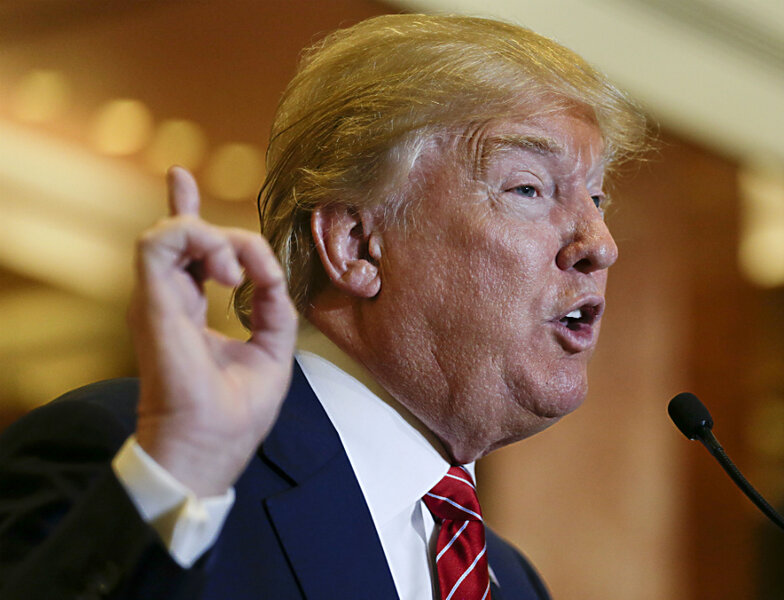The GOP's taxing choices on tax reform
Loading...
Could the tax reform issue save the GOP’s battered image? At first glance, the idea seems to make sense.
According to a survey by the Pew Research Center, 62 percent of Americans think that the Republican Party favors the rich, while only 26 percent say the same of the Democrats. Big majorities also believe that corporations and wealthy individuals do not pay their fair share of taxes.
So by fighting to close loopholes, the reasoning goes, Republican leaders could “change the narrative” and become champions of tax fairness. One specific reform target involves carried interest, a form of income flowing to general partners of private investment funds. Current tax law generally treats carried interest carried as capital gains, which means that it is subject to a lower rate. By closing this loophole and taxing carried interest as ordinary income, the government could raise an additional $20 billion over 10 years.
Closing the carried interest loophole is just one part of Donald Trump’s tax plan, which would simplify and lower rates across the board. There’s just one catch. History suggests that tax reform won’t work as a political strategy.
Thirty years ago, President Reagan proposed a massive overhaul of the US tax system. By cutting marginal income tax rates and eliminating loopholes, he aimed to make the system fairer and more efficient. The GOP hoped for huge political dividends. Republican National Chairman Frank J. Fahrenkopf Jr., said the plan would remove "the albatross that Franklin Roosevelt placed around our necks – the idea that all we care about is big corporations and the wealthy." The plan promised to take millions of lower-income Americans off the income tax rolls entirely, and GOP strategists looked forward to welcoming them to the party.
Despite long odds, the bill passed Congress, and Reagan signed it on October 22, 1986. The legislation did have some good effects: it closed wasteful tax shelters and provided tax relief to poor people. One thing it did not do, however, was provide any benefit to the GOP. A couple of weeks after the signing ceremony, Republicans lost their majority in the US Senate and saw their already-anemic numbers drop further in the House.
At the time of the bill’s enactment, 36 percent of respondents told a survey that they thought it would increase their taxes, while only 16 percent thought that it would cut them. During his presidential campaign two years later, George H.W. Bush was largely silent on the legislation, and for good reason: Most survey respondents said that the new tax law was less fair than the old one.
Two psychological forces contributed to the negative image of tax reform. One was loss aversion, the tendency for losses to loom larger than gains. Ordinary voters were much more likely to notice those parts of the bill that cost them money (e.g., limits on deductions for consumer interest) than the parts that saved them money (e.g., lower marginal rates). Another was the tendency to focus on vivid anecdotes. Despite the reform, some well-known companies and rich individuals still managed to pay little tax, and their cases got a lot of attention, leading many to believe these exceptions were the norm.
Ever since the 1986 legislation, politicians have tried to pick up the cause of reform. In his 2012 presidential campaign, Texas governor Rick Perry proposed letting people opt for a 20 percent rate with few deductions. If they did not like the result, they could instead pay their taxes under the existing system. This idea made no sense. Since it left the current tax code in place, it did not simplify the system one iota, but it did guarantee the loss of hundreds of billions in revenue. Oops.
When Trump released his tax plan early in the current campaign, he touted it as tax relief for ordinary Americans. But in part because of the Reagan-era tax reform, 45 percent of American households – mostly those with low incomes – already pay no federal income tax. Therefore, the benefits of any broad reduction in tax rates will tend to go to people with higher incomes.
According to the nonpartisan Tax Policy Center, the Trump plan would give the top 1 percent of earners an average tax cut of more than $275,000 and the top 0.1 percent would get an average $1.3 million cut. By contrast, the lowest-income households would get an average cut of $128. Under widespread criticism, Trump has been giving himself a great deal of wiggle room on his proposal, saying “by the time it gets negotiated, it's going to be a different plan.”
It’s possible that Trump could win the election. But it’s not likely that he could win it over the issue of tax reform.
Jack Pitney writes his "Looking for Trouble" blog exclusively for Politics Voices.







